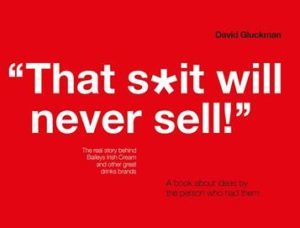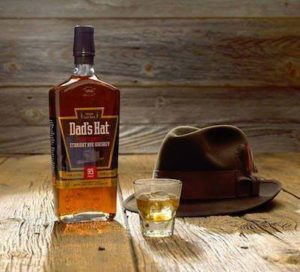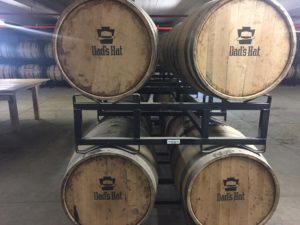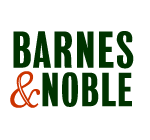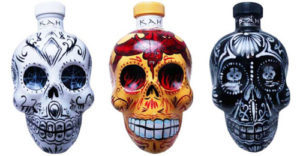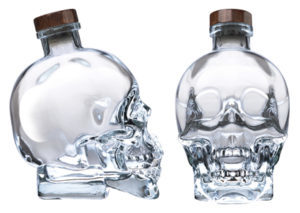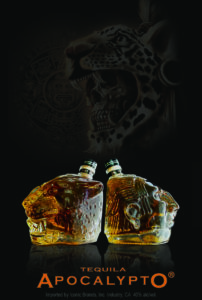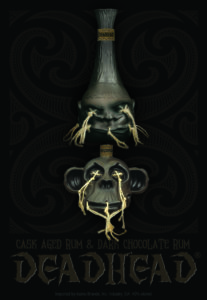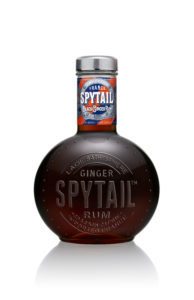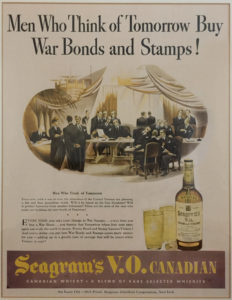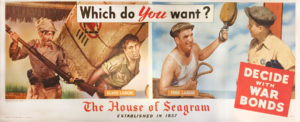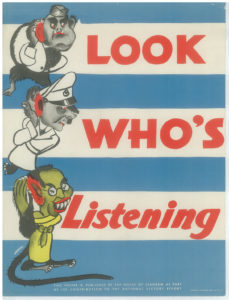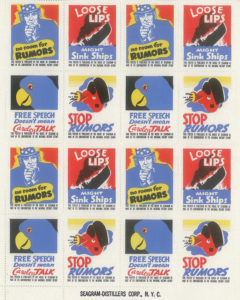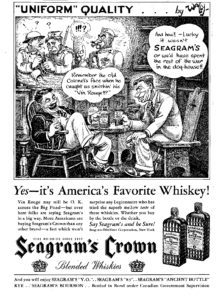Arthur Shapiro's Blog, page 6
May 3, 2017
Napa or Sonoma: Which to Visit?
A number of friends and readers have asked me about which California Wine Country is most worth a vacation visit. I’ve gotten this question many times and since it persists year after year and this time struck close to home, I figured I ought to look into it further and write about it.
So, I contacted an internet buddy (what we used to call ‘pen pal’ back in the day) and asked him about it. What follows then, is a conversation between me and Mark Davis, the managing partner of Tango Tours.
 Photo Credit: Brocken Inaglory via Tango Tours
Photo Credit: Brocken Inaglory via Tango ToursTango Tours
Mark has been running the company since 2014 after 20 years in the travel industry. He was also in the Tango Trading Company which specialized in wines of Argentina. Tango Tours is a luxury travel company that offers exclusive culinary and wine experiences in Argentina, Chile and Napa Valley. Who better to ask than someone whose business is tourism and hospitality.
When I first posed the question of which one to visit in California, Mark pointed out that he loves both then went on to say, “If you have to choose between the two, the decision should be based on your preferences. The two have very distinct features, and you may prefer the qualities of one over the other.”
This interview is aimed at just that—the basic differences between Napa and Sonoma Valley so that you can make an informed decision.
Let’s start with some basic differences. What are they?
“Napa” may refer to the City of Napa or Napa County. “Napa Valley,” however, is the wine grape-growing region, which is an American Viticulture Area (AVA). When we make reference to “Napa Valley,” we mean the Napa Valley AVA, which includes 16 sub-AVAs, and over 400 wineries.
Likewise, “Sonoma” or Sonoma County may refer to the City of Sonoma, Healdsburg or Santa Rosa. Sonoma County includes 17 AVAs, including the Sonoma Valley AVA.
How are the wineries different?
Sonoma and Napa Valley have nearly the same number of wineries. However, the ones in Napa are a lot closer together than those in Sonoma, which are spread out throughout the region.
Napa Valley wineries exude the glitz and glamor of the American wine scene. The names of some Napa wineries even come up when talking about the best wineries in the world. At the famous, “Judgment of Paris” in 1976, two Napa Valley wines were rated the best in their respective categories, beating out their French counterparts.
Wine tastings can be pretty expensive in Napa, with the costs going up if the wines are served with food.
Sonoma Valley wineries, on the other hand, are much more laid-back and relaxed. Also, expect fewer crowds, and the prices to be much lower in Sonoma. The tasting fees tend to decrease as you get farther from the main roads.
And the wines themselves? How are they different?
Napa Valley mainly focuses on the production of different varieties of Cabernet Sauvignon and Bordeaux varietals, Chardonnay and Sauvignon Blanc. Of course Cabs and Chardonnays can be found in Sonoma Valley. But Sonoma Valley, on the other hand, produces everything from Charbono (also known as Douce noir) to Gewürztraminer, and from Pinot Noir to Zinfandel. So, if Cabs and Chardonnays are your thing, you may want to try a Napa Valley wine tour. But if you want a more varied wine tasting experience, head to Sonoma.
What about food?
Napa Valley has the highest per capita concentration of Michelin Starred restaurants of any wine-producing region in the world. Napa Valley focuses more on fine dining, with a large number of restaurants offering refined exotic dishes.
Yountville, a town in Napa, provides the biggest culinary punch of the region. In the city of Napa you can visit Oxbow Market, which is a covered market hall, to pick up some snacks, like freshly baked bread and cheese or herbs and olive oil. Or if you would like to have a picnic at a winery, try the Oakville Grocery or Dean & Deluca for sandwiches and prepared foods.
The culinary scene in Sonoma is quite different. However, it has its own unique standards in terms of food. The Shed in Sonoma Valley is the counterpart of Napa’s Oxbow Market. Sonoma also has a Michelin Starred restaurant in Forestville, which gives Yountville’s finest restaurants some tough competition.
However, while Napa is all about fine dining and celebrity chefs, Sonoma offers a simpler experience having most of the dishes prepared from seasonal ingredients.
Aside from eating and drinking, which are my two favorite pastimes, are there differences in what to see or do?
When it comes to activities, Napa Valley is far ahead of Sonoma. But that doesn’t mean you will find nothing to do in Sonoma other than wine tasting.
In Napa, there is the famous Wine Train that takes you on a ride around some of the County’s wineries and town centers. You can also go for a hot air balloon ride, or paddle in the Napa River.
Also, the Golden Haven Spa offers healing mud baths for visitors. The wine blending lessons at Conn Creek Vineyards, or the cooking classes at Whitehall Lane are also popular with visitors. As is shopping on the main street of St. Helena in Napa.
Sonoma also offers a number of outdoor activities, like navigating the county’s waterways in kayaks, attend cooking parties, zip line or hiking through the Armstrong Redwoods Reserve. You can also spend a day at Safari West seeing African animals.
Despite these attractions, Sonoma is a lot quieter than Napa, which is always buzzing with activities.
If you want your wine tasting experience to be a grand adventure, and you’re ready to spend more, take a trip to Napa Valley.
If you’re looking for a more relaxed time, plan a trip to Sonoma. Also, since it is less expensive, you can spend more days in Sonoma Valley.
Thank you, Mark. You can reach Tango Tours here.
For more information about the differences between the two, you might want to visit Wine Folly.
 Image Source: By traveldudes via Tango Tours
Image Source: By traveldudes via Tango Tours
April 17, 2017
That S*it Will Never Sell
David Gluckman has spent 45 years in the drinks industry (the British phrase for the Booze Business) creating such outstanding products as Bailey’s Irish Cream (along with Tom Jago), Tanqueray Ten, Cîroc and scores of others. His book, whose title is the heading of this article, is a fascinating guide to what it takes to innovate and launch new products in this industry.
David was born in South Africa and came to the UK and began working in advertising. His accounts included such companies and brands as Procter & Gamble, Kerrygold butter, and several Unilever brands. In the late 1960s, he became a consultant to IDV (International Distillers and Vintners—a company that ultimately became Diageo), and entered the world of brand development.
As a new products/innovation toiler myself, I found the book to be captivating and a joyful ride on the sometimes-turbulent road of brand development.
A review by Paul Walsh (ex CEO of Diageo) put it nicely, “David Gluckman has a ‘one-of-a-kind’ approach to new brand development, but amazingly, it works. You will enjoy this book.”
I sat down (virtually) with David and asked him about his experiences.
You’ve spent most of your career on innovation and product development, what are the biggest obstacles you’ve encountered over the course of your career? Who are the innovation villains?
Somebody once asked me why we had such a high strike rate getting brands onto the market at IDV. My answer “No marketing people.” No middle managers asking to see alternative ideas to go into massive research programmes. I can’t imagine major players like Sidney Frank or Abe Rosenberg doing concept testing. We had a very small team of like-minded individuals and the beauty was that we reported to top management. I sold the idea of Smirnoff Black to Denis Malamatinas in under 10 minutes. And Aqua Libra to Tim Ambler in 5 minutes. Well, that’s because I knew him better.
After leaving Diageo I did a project for a large drinks company. The budget was huge and I worked in parallel with a global innovation giant. I delivered my work a month ahead of schedule and I thought the solutions were really good. I think it was a case of ‘budget allocated, budget spent, end of story’. Nothing happened. I would be happy to go and re-pitch the ideas to the company tomorrow. At no charge. I am confident the ideas would work.
Which companies (or individuals) that you’ve worked with were most welcoming or encouraging to new ideas?
IDV was a ‘one-and-only’ when it came to fostering new brand development. Baileys took about 5 years to become significant and yet the company tolerated us (Tom Jago and me) even with the odd expensive failure. Adventure seemed to be built into the IDV culture. When Jago left and Tim Ambler took over the rate of development accelerated. I think of all the people I worked with, Tim was the most inspiring. He really knew the business and he was on the main board and could make things happen. IDV also formally introduced Tom Peters’ ‘brand champion’ idea so top management from all over the company were taking leadership on new ventures.
What’s the biggest regret of your career? What have you done or worked on that you wished you hadn’t?
When I parted company with Diageo in 2005 I got together with two ex-colleagues to develop Coole Swan, a super-premium cream liqueur. The category 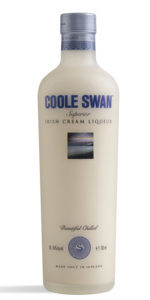 made sense because there was nothing above Baileys and we felt there was an opportunity for a product with lower sweetness and more modern, sophisticated packaging which broke with the Baileys’ template. I was as proud of that brand as with any I developed for IDV/Diageo. The problem for me personally was that it took me out of my comfort zone and into marketing and finance – not part of my skill set. I still firmly believe that it will be a great buy for a company out there with muscle and resources. But I should have negotiated a brand development fee and a small piece of the action and left it at that.
made sense because there was nothing above Baileys and we felt there was an opportunity for a product with lower sweetness and more modern, sophisticated packaging which broke with the Baileys’ template. I was as proud of that brand as with any I developed for IDV/Diageo. The problem for me personally was that it took me out of my comfort zone and into marketing and finance – not part of my skill set. I still firmly believe that it will be a great buy for a company out there with muscle and resources. But I should have negotiated a brand development fee and a small piece of the action and left it at that.
Thinking about all the new products or innovations you’ve worked on, which are you most proud and why?
It would be easy to say Baileys or Cîroc because they were so successful. But for me the two intellectual challenges which were most satisfying were Smirnoff Black and Distilled Guinness. In the Smirnoff case, the brand was on its knees in the US. The idea of a premium version to compete with Absolut and Stoli was scarcely credible. The solution came from a word more familiar in the brown spirits sector—we set out to achieve and perfected ‘the world’s smoothest vodka.’ And the product delivered. Hard-nosed New York 40-somethings really could taste the difference. And even when I told them it was from Smirnoff they said they preferred it.
Distilled Guinness never got off the drawing board but the way the idea came together in my head was incredibly exciting. If you can have Jewish epiphanies, this was one. The discussion was about a Guinness Whiskey. Should we take the brand into a new category? On the surface, the only way was Irish and at the time (1998), Pernod-Ricard owned the market. So, Guinness Irish Whiskey didn’t seem to make commercial sense. Then out it popped. The fruit of all those lengthy distillery visits. Whisky starts life as a fermented product. A beer. Then it’s distilled. Why not simply distill Guinness? And call it that. Distilled Guinness. No SWA {Scotch Whisky Association}, no barrel-ageing, make it where you like and make it taste the way you choose. We designed the pack the same evening and I was in a couple of focus groups a few days later. But it never happened.
What do you make of the craft (or small batch) product movement in the US and UK?
I never liked claims like ‘small batch’, ‘hand crafted’ which are all over the place these days. They are hollow claims, just hype. They don’t really mean anything. I always liked brand claims that led to real benefits not stories. It was my advertising training working for Unilever and P&G. Smirnoff Black was a palpably smoother vodka and Tanqueray Ten is made from fresh botanicals and has a fresher, cleaner gin taste. These are real product benefits. They could get drinkers to change their minds.
I’m not sure I agree with David on this last point inasmuch as the back story of a new brand must answer the trade’s question as to “why this and why now.” I think it’s the mix of what’s in the bottle together with the brand’s reason for being that often yields success.
~~~~~~~~~~~~~~~~~~~~
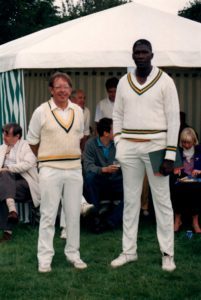 David Gluckman (L) and Joel Garner, a famous cricketer.
David Gluckman (L) and Joel Garner, a famous cricketer.You can learn more about his book and buy a copy at this website.
It’s my second favorite book about the Booze Business. Can you guess which is the first? 
March 22, 2017
Dad’s Hat Pennsylvania Rye Whiskey
America’s first whiskey was made from rye, not corn, and Pennsylvania was where it was produced. In the late 18th century, pioneering farmers from Europe with distilling skills found that rye grain was easy to grow and made a very delicious spirit. The first American indigenous spirit was born.
(I’m far from a whiskey or spirits historian so for more detail I suggest you read some of the books and blogs by David Wondrich, Fred Minnick, Chuck Cowdery, Gaz Regan, and others.)
But, after Prohibition, the stills of Pennsylvania remained closed.
Starting in 2011, spurred on by Pennsylvania’s new distilling regulations, rye whiskey returned to the state and since has begun to flourish.
Enter Dad’s Hat
John Cooper and Herman Mihalich had known each other from their college days at Wharton. They kept in touch over the years as each pursued different careers—John as a sales person in tech and software areas and Herman in the chemical industry.
Along about 2006, each had grown tired of the corporate life and began thinking about “what comes next?” An article by Eric Asimov in the NY Times on November 29, 2006 pointed the way. It was headlined: “All but Lost, Rye Is Revived as the Next Boutique Find.” They decided that they were going in to the booze business and, “bring rye back to where it belongs—Pennsylvania.”
Herman’s father owned a tavern (and at certain times, a speakeasy), so he felt right at home in the business. As Herman puts it,
“My Dad wore hats. Real hats. The kind you only see in old pictures or movies… Before he left the house each day, he’d carefully choose one from the rack and don it. The hat always seemed to fit his mood—or the occasion—perfectly. In those days, it was more than just fashion. A symbol of optimism. That we cared about quality, polish and finish. A subtle, personal signature. From an era when taking the time to do it the right way mattered.”
That became the credo and guiding principle for the distillery—to produce a rye that is true to its Pennsylvania roots and based on quality and a particular style.
So off they went to the Michigan State Artisan Distilling Program and by 2011 they were off and running.
I’ve met scores of startup and craft entrepreneurs and many (but certainly not all) subscribe to a philosophy that I call “build it and they will come”—meaning it’s all about the distillery, the process, and the end product. Only a handful think in terms of the drinker, the bar, the marketing, and sales.
For Herman and John, this broader view of the business means is that they have fully thought through the commercial and route-to-market issues. Take distribution for example. They don’t lose focus by opening markets indiscriminately (hoping to increase revenue) but by strategic expansion. They don’t over promise; they strive for consistency; and, believe that slow and steady growth is the way to go.
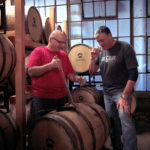 Herman Mihalich (L) and John Cooper (R)
Herman Mihalich (L) and John Cooper (R)The products—Local, sustainable, practical, and genuine
Dad’s Hat is a rye in the Pennsylvania Rye tradition. Period.
The rye comes from their close relationships with local farmers. The spent rye mash even goes back to the farmers to feed their livestock. Using high-quality ingredients, a grain bill of 80% rye, 15% barley malt and 5% rye malt yields a “flavorful mash that undergoes a week-long, controlled fermentation to develop complex flavor.”
The recipe was formulated at the Michigan State program over a two-year period and is based on traditional Pennsylvania rye whiskey.
The flagship is, of course, the 90-proof classic Pennsylvania Rye Whiskey, which, by the way, was recently awarded “Best in Class” by Whisky Advocate and named the Craft Whiskey of the Year for 2016.
There is a Straight Rye Whiskey (95-proof). Also, a Bottled in Bond 100 proof Straight Rye Whiskey aged four years.
But to me, their most intriguing products are the rye whiskies that are finished in vermouth and port barrels (also 94-proof). These came about when John and Herman were sitting around one day after work, drinking manhattans, and wondering about line extensions. The eureka moment was “what would happen to a Manhattan if the rye was aged (3 to 6 months) in a vermouth barrel?” I’ve tried it and, let me tell you, it’s amazing.
This idea also led to port barrel finished rye with an interesting taste. Both products use barrels from the Vya-Quady winery in the San Joaquin Valley of California.
~~~~~~~~~~~~
Dad’s Hat Pennsylvania Rye Whiskey sells for roughly $40 for a 750ml. The distillery and warehouse is located in Bristol PA in Bucks County and just across the river from New Jersey. There are tours which are held on most Saturday afternoons and well worth the visit.
Finally, a big shout-out to my friend Cliff Oldfield with whom I fought the Mongolian wars a few years ago. Cliff introduced me to John and Herman. He runs their sales in the NY-NJ region and is among the most effective salespeople I know these days.
Gentlemen: My hat’s off to all of you. (Please… I can hear you groan.)
March 8, 2017
Inside The Bottle Updates: Barnes & Noble, Goodreads, and More
Thank you to everyone who has purchased Inside The Bottle: People, Brands, and Stories.
I’m thrilled by the positive comments and feedback. Thanks especially to those who took the time and trouble to write a review; it has increased the book’s visibility and audience. I am most grateful.
Your reviews are a powerful way to improve the visibility of my book inside the vast marketplace of Amazon and I appreciate all who have taken the time to write one.
Speaking of visibility, the book was recently picked up by Barnes & Noble which is an immense honor. You can now purchase the book via their website.
I have also launched an author page on an important book social network, Goodreads. If you are a member of that platform please follow my page, perhaps add the book to your reading list, maybe suggest it to your connections, and consider leaving a review.
Speaking of reviews, thank you to F. Paul Pacult and his Spirit Journal for this wonderful write up:
For anyone in the beverage alcohol business, blogger and former Seagram Executive Vice-President of Marketing, Arthur Shapiro’s new book is essential and often compelling reading. That’s because Inside The Bottle chronicles many of the salient events that happened from the late 1980s to the present in terms of beverage alcohol brand development, marketing strategies, consumer trends, and behind-the-scenes events.
Shapiro’s viewpoint is unsparing, insightful, and candid in its exposition. His lofty position within Seagram at a crucial time in its history afforded him a unique perspective on the crumbling of the Bronfman Empire. And, his opinions on brand marketing read like a tutorial.
A not-to-be-missed read by anyone who has ever championed a booze brand, taken a hankering to beverage alcohol history, or just enjoyed entertaining “dishing.”
And last but not least, I want to point you toward a fantastic blog post by Miki Hickel (the illustrator and graphic designer of Inside The Bottle) about her experience putting the book together.
Didn’t order your copy yet? Purchase from the retailers below and check out my page on Goodreads.
February 23, 2017
Kim Brandi: The Rocky Road of an Innovator
This is the story of an amazing and gifted woman who followed her dream to develop her own brand and start her own company. The ups and downs she confronted are important lessons about business in general, and the booze business in particular. It’s also a story about violated trust, duplicity, and outright thievery. Most people, faced with the difficulties Kim Brandi has endured, would close down and move on.
Not Kim Brandi. Her tenacity and resilience, coupled with a can-do attitude, sustains her continued innovation journey. Folks, she is among the most creative and outside-the-box thinker I’ve meet in very long time. If I were still at Seagram, I’d hire her in a heartbeat. But, she would turn me down in favor of the American Dream to own her own business.
There is a lot to this story so this will be one of a number of articles on Kim.
 How I met Kim Brandi
How I met Kim BrandiA mutual friend, Ted McDonnell, introduced us under some interesting circumstances. Ted, owner of the Liberty Lighthouse Group, a sales and marketing agency, called and asked if I could assist Kim in a pending lawsuit by helping to ‘value’ her brand. Ted is a great guy and I was only too happy to follow up.
The brand? KAH tequila.
The circumstances? Well, that’s a long and complicated story.
KAH Tequila
Inspired by the spiritual meaning of Dia de los Muertos and the calaveras—the ornate decorated sugar skulls used in the rituals of Mexico’s Day of the Dead celebrations—I began to research and develop my own tequila brand. I came up with the new concept of marketing a quality tequila that would be sold in unique hand-painted, calavera skull–shaped bottles.
She named the brand KAH which translates to “life” in Mayan. In 2009, Kim formed Elements Spirits to import and market the brand. The manufacturer she found produced a very premium tequila and the relationship between Kim and the owners was warm and friendly. Or so she thought.
By 2010, consumer demand exceeded Kim’s expectations and she put expansion plans in place. No sooner did she do that when the folks from Crystal Head vodka sued her claiming that the KAH Tequila bottle, with its hand-painted calaveras skull, was somehow confusingly similar to the clear glass bottles used by the company Dan Aykroyd owns to sell Crystal Head vodka. Seriously? I don’t understand how a consumer would be confused by the two packages.
(Just to fast-forward for a moment… the Crystal Head lawsuit was first dismissed in 2010 by the United States District Court based upon the Judge’s determination that there was no likelihood of confusion; Crystal Head appealed and insisted it should be allowed to present its case to a jury; an appeals court agreed and sent the case back for trial; in 2013, a unanimous jury also found there was no likelihood of confusion ; an appeals court reversed the jury verdict on a technicality, and now the case is again set for another jury trial in March of this year. In short: the lawyers are making a bundle.)
But that was only part of the problem. Kim partnered with the owners of the distillery in Mexico that produced the tequila for the KAH brand, who turned out to be less than trustworthy. Based on what I know about evil human inclinations—I believe they looked at her being “a woman of color” as an easy target. They were wrong; Kim is as tough as can be.
How KAH was lost
This is the long, somewhat difficult and potentially litigious narrative, so I’ll tread softly and succinctly.
The owner of the Mexican contract bottler brought an investor to the table. Elements Spirits (Owned by Kim) entered into a Stock Purchase Agreement with WXYZ
Before she knew it, WXYZ assumed a majority interest in Elements and took control.
A series of unpleasant events and attacks on Kim’s role in the business followed. Lawsuit after lawsuit ensued and the cost to Kim to defend them rose and rose.
The worst part was that the new owners began attempting to remove Kim from the KAH history and claimed others had created the brand.
To protect herself, she filed copyright registration in 2011 for all parts of the KAH brand and package and all applications were approved.
In the fall of 2013, Brandi and Elements (now controlled by WXYZ) attended a court-ordered mediation in the Crystal Head litigation in order to work out a resolution of various disputes. They needed peace, so they could fight the Crystal Head suit.
The binding agreement called for acknowledgement that Kim was a shareholder of WXYZ (they had previously cut her out) and also acknowledged her ownership and copyright rights.
The agreement was ultimately breached and WXYZ and the Mexican co-packer began a series of actions to infringe on the copyright owned by Kim. Assorted other deceptions and outright illegalities followed. A vicious fight in the U.S. and in Mexico ensued. In the end, the U.S. court acknowledged, Kim’s rights to the intellectual property ownership of the calavera shaped bottle. She won the battle but not the war.
Meanwhile, WXYZ continued to sell KAH with no royalties or proceeds going to Kim. She was forced, therefore, to file suit to block the KAH importation and to notify U.S. distributors to cease selling the brand.
In sum, for six years, Kim Brandi was embroiled in a fight for her intellectual property rights. Finally looking forward to ending the pillaging of her life’s work and livelihood, a trial was scheduled for December 8, 2016.
Seeing the handwriting on the wall, WXYZ and the Mexican co-packer sold KAH Tequila to the Amber Beverage Group (a division of the Stoli Group) for an undisclosed amount.
That’s Where I Come in
Kim and her attorney, Jon Miller (Miller Johnson Law), asked me to appear as an expert consultant to assist at a mediation session. My role was to address the value of the KAH brand and help explain what the spirits industry was all about—in terms of operations, finance, sales, and other matters.
The valuation of KAH was difficult, since Kim Brandi was kept in the dark. The records and information about sales were not easy to come by. A friend provided some public data and Kim’s ingenuity located some import sales data, so we knew the number of cases sold.
On November 2, 2016, Amber Beverage – the new owners of Fabrica de Tequila Finos, S.A. de C.V. (producers of tequila for the KAH brand) and Kim Brandi settled their disputes over the ownership, sale and distribution of tequila using the unique calavera bottle design. The intellectual property related to KAH (calavera-shaped bottle, trademark, various artwork) was transferred for consideration and is now under the control of Amber Beverage.
I can’t go into the details, but suffice to say that—for better or worse—the matter was settled.
Lessons learned
Be careful with whom you do business. That smiling friendly face across the table can easily become evil when money is around. Of course, you never really know at the outset, so protect yourself with all the paperwork you can (or that makes sense) right at the beginning.
Surround yourself with knowledgeable, experienced booze business people and take their advice.
With all due respect to my lawyer friends, don’t assume the courts and the legal process will come to your aid. Even when you win, if the other side has deeper pockets, the system allows them to keep going at your expense. (Although if you end up in court, try to find someone like Jon Miller to represent your interests.)
What is Kim doing now?
Tenacity is a word that gets bandied about a lot. It’s defined as the quality or fact of being very determined. In Kim’s case, I’d have to say that she is beyond tenacious. She gets going and is fueled by her creativity, passion, and desire for innovation. When she lost KAH, she created a new vision for the Sangre de Vida (Blood of Life) brand, to be released this Spring, which I’m sure will be no less than amazing. I’ll show it to you when it’s released.
Her other tequila is called Apocalypto Tequila, an award-winning product, it is handcrafted in packaging made from artisanal glass.
The most interesting product, Deadhead Rum, is produced by a special slow process and aging that makes the product unique in taste and complexity. There is also a Deadhead Dark Chocolate rum, coming this spring. I have not tried it as yet but the back story is incredible and from what Kim has told me, the taste is extraordinary. And, so is the package.
~~~~~~~~~~~~~~~~~~~~
The Booze Business needs people like Kim Brandi. If you haven’t figured out why as yet, stay tuned, I’ll be telling more of her story in the future.
February 9, 2017
France, Submarines, Underwater Explorers… and Rum
I ran into my friend Elwyn Gladstone a few weeks ago and asked him what he was up to. His answer was surprising, but, then again, everything Elwyn does is unique and extraordinary.
I’ve known Elwyn for a number of years and wrote about him last year when he launched Malfy Gin. He is a smart businessman, an astute marketer, and a successful product innovator. As I mentioned in my earlier post about him, he was instrumental in the development and launch of brands such as, Hendrick’s Gin, Sailor Jerry, Kraken Rum, Stranahan’s Colorado Whiskey and others.
The company he launched, Bigger & Leith, has this description on their website:
Biggar & Leith owns a small portfolio of fine spirits from established, family-owned distilleries who are dedicated to innovation and quality. We search the globe for brands whose bottles transmit the personality and stories of the people who make them.
With that in mind, let’s take a close look at SPYTAIL Black Ginger Rum.
Submarines and rum
SPYTAIL Black Ginger Rum is produced by La Compagnie Bathysphere. It is Caribbean Rum aged, spiced, blended and bottled in the Cognac Region of France. It’s based on the French tradition of aging rum with fresh ginger.
SPYTAIL’s story celebrates the French deep-sea pioneers whose underwater efforts are renowned both in fact and fiction—from Jules Verne to Jacques Cousteau. The name “SPYTAIL” was discovered by their distillers stamped on an old engineering plan for a submarine in the local maritime archive. They also discovered that, while submarines sailed along the bottom of the Charente River, ships laden with rum and ginger followed the same route from the Caribbean.
Voila—an inspiration emerged. Barrels of rum filled with fresh ginger roots and aged until the liquid turned almost black.
Why stop there? The packaging inspiration
Elwyn and his distilling partners decided that to fully acknowledge the product, the history of the region and French submarining, an appropriate package needed to be created.
The SPYTAIL bottle shape is based on a Bathysphere (a primitive form of submarine) with a porthole embossed on the front and back. Hidden within the embossing are the co-ordinates of the final resting place of Jules Verne. The navy blue and orange striped label, based on a French Navy signal flag, is adorned with engineering details from original submarine designs. The heavy stopper is crafted from metal and embossed with the words “Voyages Extraordinaires” – a nod to underwater pioneers.
It’s a fun product with an interesting back story.
But what about the taste and the product itself? I’m glad you asked…
The liquid
Black ginger rum is a terrific idea and a strong entry in the growing premium rum category. In addition, ginger has become a seriously popular flavor among cocktail consumers – Moscow Mules, Dark & Stormy, ginger beer, and more.
I’m not a spirit’s reviewer— just a booze business guy who enjoys cocktails and trying new products. So, here’s a layperson’s observation.
I tried it on the rocks with a twist of orange peel and with ginger beer. I also used it in a hot toddy instead of whiskey. The rum and the ginger really complement each other and it’s enjoyable and unique.
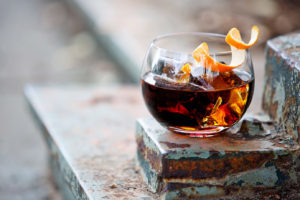 On the rocks
On the rocks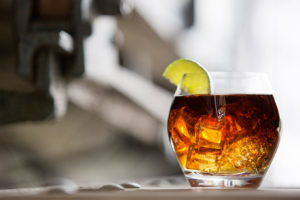 With Ginger Beer
With Ginger Beer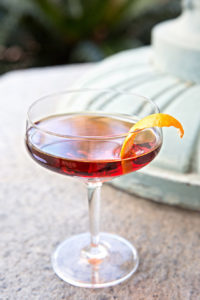 The Nautilus: 4 pts SPYTAIL, 2 pts Amaro, 1 pt vermouth, allspice and bitters
The Nautilus: 4 pts SPYTAIL, 2 pts Amaro, 1 pt vermouth, allspice and bittersProduct details
SPYTAIL Black Ginger Rum is produced and bottled in France and imported by Biggar & Leith. It’s 40% alcohol by volume and a 750 ml sells for under $25. In addition to the U.S., SPYTAIL is also available in Canada, France, U.K., Japan, Australia, New Zealand, and South Africa.
~~~~~~~~~~~~~~~~~
I very much look forward to my conversations with Elwyn. He has a unique grasp on the booze business and incredible insights. Beyond that his product offerings are top notch, creative, and based on his in depth understanding of today’s drinkers’ need and wants.
Malfy Gin is doing quite well and the early indications are that SPYTAIL is getting good reviews by the trade.
Here’s to continued success, Elwyn. Cheers!!
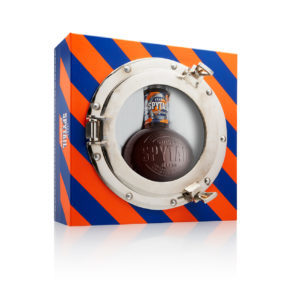 The press packet presentation of SPYTAIL.
The press packet presentation of SPYTAIL.
February 2, 2017
Seagram: Down Memory Lane—Part 2
Welcome to the second installment of Seagram vintage posters, ads, and products. Like most companies at the time, Seagram participated in using its advertising and promotion efforts and money on behalf of the war effort. This included ads promoting the purchase of War Bonds and public service announcements.
(Thanks again to John Hartrey who contributed these ads from his Seagram vintage collection.)
January 25, 2017
On the Road to Success
A little over a year ago I wrote about the launch of this interesting new product and Kevin Mowers, the person behind it. You can find the story here.
I caught up with Kevin recently and asked him how it was going and what his experiences were as a startup brand. 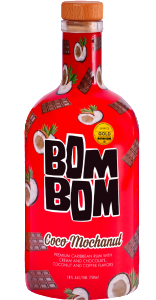
What I did not mention in the original story is that the Bom Bom team consists of Kevin and his wife Eva Maria. Both bring different skills to the brand and, it turns out, that she played a crucial role in the brand’s development, as you will see. So, this interview was with both of them.
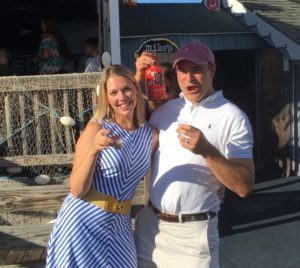 Kevin and Eva Maria
Kevin and Eva Maria
BB: How is it going? What were the highlights of 2016?
Kevin: Great – keeping busy! We launched mid-year in CT and then branched out into MA, DC and NY (Westchester County and Long Island). Our distributors did a great job getting BOM BOM into retailers while we were focused on getting BOM BOM into consumer’s hands. We did this through a lot of in-store and in-bar sampling promotions as well as showing the product at larger tasting and charity events. One of the most important things for us was to make sure we keep having fun and celebrating every victory and every milestone, however small.
BB: What are the biggest obstacles or challenges you face? What have you done about them?
Eva Maria: The biggest challenge for us, like for any new brand, has been awareness. Since we are not national, the typical PR and marketing playbooks were not relevant for us, as we needed a more market-by-market, grassroots approach. We have pushed ourselves to really think outside the box, leave our corporate models behind, and leverage local PR, especially bartender contests, magazine profiles and social media. There is still much, much more to do. As we grow into more markets, we’ll be able to expand our PR outreach accordingly and that’s a top priority for 2017.
BB: Many new product entrepreneurs have told me that the single most important element in developing their brands has been in-store tastings, as you’ve just mentioned. I’m not surprised that this would be particularly true for Bom Bom.
Kevin: Indeed. We love doing in-store tastings as it allows us to engage with consumers. For us it has been just as much about getting feedback (and new drink recipes!) from consumers as sharing the BOM BOM story. BOM BOM Coco Mochanut recently received 94 points by the International Review of Spirits, which means it is the highest in its category. As such, we love seeing the excited look on people’s faces after they’ve tried it, especially when they themselves start selling it to complete strangers in the stores for us!
BB: I’ve known you for a few years and watched the development and launch. But I never wrote about how Bom Bom came about in the first place. What’s the brand’s back-story?
 Eva Maria: Like a lot of today’s modern romances we were introduced by a common friend — Tracy — Who to this day takes credit for our awesome relationship and by association, BOM BOM.
Eva Maria: Like a lot of today’s modern romances we were introduced by a common friend — Tracy — Who to this day takes credit for our awesome relationship and by association, BOM BOM.
Kevin had spent the better part of his career designing great tasting products for the industry’s top players and so of course tried to impress me with his extensive knowledge of luxury spirits. But it wasn’t really doing it for me as I was never really into alcohol…. this was both a disappointment and a challenge to Kevin… and good thing for me (and our BOM BOM fans) that Kevin happens to love a good challenge.
After a few dates, Kevin changed his game and mixed up something special just for me, made with my favorite flavors — coffee, coconut and of course CHOCOLATE! And BOM BOM was born!
I loved it so much that I started asking him to make it for friends and with time it was a standing order from friends and friends of friends…. We were making it all of the time and decided to go for it and formed the company “BOM BOM Brands” to share our fun with the world!
BOM BOM is all about the right mix of flavors, having fun and being authentic. Our business partnership really is the same idea…. we have very different skill sets and so together we’re able to accomplish what neither of us would be able to do on our own.
And, to make the deal even sweeter, Kevin’s wooing is still going strong after three wonderful years of marriage….
BB: What does the future hold for the brand – line extensions, geographic expansion, etc. What do you think will be coming down the road?
Kevin: BOM BOM is all about having fun and being authentic. As all small companies, we are excited to bring this fun to additional markets but also cautious not to dilute our efforts and grow too fast. From a new product perspective, we have a few new innovations in the mix. As with Coco Mochanut, all of our new products will be great tasting and in fun, fashion-forward packaging.
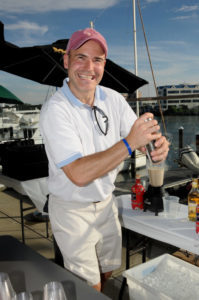 Kevin making cocktails at an event/tasting
Kevin making cocktails at an event/tasting
December 15, 2016
Seagram: Down Memory Lane—Part 1
There are a few of us Seagram alums that meet periodically for lunch, but mainly to tell Seagram stories and, well, laugh our asses off. I’ve tried to capture some of the stories in this blog and my book although I’ve barely scratched the surface.
At almost every lunch, John Hartrey never ceases to amaze us with his collection of Seagram memorabilia including ads, promotion items and brands. John, currently doing some industry consulting work, held a wide range of important m...
October 26, 2016
Over a Barrel
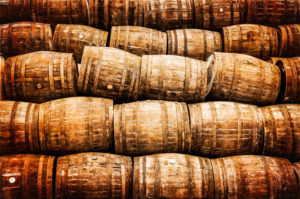
It all started earlier this summer when I read a blog posting from my friend, Al Milukas. Al publishes a blog called Live the Live and I follow it avidly. It’s a great source of information on all matters of food and drink. This story, in particular, called Aging Spirits in Oak Barrels at Home, caught my eye and interest.
The next thing I know, I am the proud owner of a one-litre barrel from Red Head Oak Barrels and spent the next few months e...

